Automation has become a key factor in improving the efficiency and accuracy of bonus calculations within organizations. However, the extent of its implementation depends largely on the maturity of the available data and information flows. The more reliable and well-structured the data, the more feasible a fully automated process becomes, delivering significant time savings and drastically reducing human errors. Conversely, when some data are still manually managed or pose quality risks, manual intervention becomes necessary to ensure flexibility and correct potential errors.
This article explores the various automation options, ranging from complete automation using APIs to hybrid processes where human oversight remains essential for data validation and correction.
Complete data extraction automation: the key role of APIs
Complete automation of data flows is the ideal many companies aim for, especially those managing large volumes of information from multiple sources. APIs (Application Programming Interfaces) now make it possible to automatically and in real-time collect the data needed for bonus calculations directly from clients’ information systems.
APIs have become increasingly accessible and simpler to implement. They enable seamless connections between different platforms, allowing data to be extracted at the desired frequency. Once collected, automation can go even further by handling bonus calculations, data validation, and the generation of both individual and collective reports necessary for managing incentive compensation.
The benefits of full automation include:
- Significant time savings: Automation reduces time spent on repetitive tasks like data collection and consolidation, freeing up resources for higher-value activities.
- Error reduction: Automating end-to-end processes drastically minimizes the risk of human errors, particularly during complex steps like bonus calculations or report generation.
- Traceability and auditability: Automation centralizes and stores data, enhancing traceability and simplifying audits.
However, this approach requires high-quality, well-organized, and reliable source data. Without this foundation, errors in the data will cascade through the process, rendering the system ineffective or inaccurate.
Hybrid automation: retaining room for human intervention
While full automation is ideal in a reliable data environment, it is not always feasible or desirable. In some cases, retaining flexibility for teams involved in bonus calculations is essential, especially when data are not consistently up-to-date or require human validation.
Scenarios supporting a hybrid approach :
Manual corrections of input data
Some clients prefer to manually adjust portions of the data before bonus calculations, without syncing these changes in their information systems. This may occur when updating the systems is cumbersome or when operational requirements demand quick adjustments.
Technical solutions to address this need include:
- Dedicated interfaces or workflows: These tools allow administrators or operational teams to modify or validate specific data before calculations are performed.
- Flat file utilization: Instead of relying on APIs, some systems use flat files (e.g., CSV, Excel) that can be imported into the calculation solution. This approach offers flexibility, as administrators can modify the files without requiring a complete update of the information systems.
Post-calculation adjustments
Occasionally, corrections to past bonus calculations are necessary. This might happen when data errors are detected after the fact or adjustments are required to reflect new information.
In such cases, it’s crucial to retain a record of the original calculation while enabling error corrections without recalculating the entire process. Dedicated workflows or user interfaces can help manage these adjustments efficiently while ensuring full transparency of the changes made.
The challenges of flexible automation
The primary challenge of partial or hybrid automation lies in the technical complexity of implementation. Each client may have different requirements and varying levels of data maturity, often necessitating the use of multiple solutions within the same organization.
For instance, a client might have fully automated data flows for certain parts of the process but require manual intervention for others due to data quality or availability issues. This disparity demands highly flexible technological solutions tailored to specific needs while maintaining overall process efficiency.
Full automation is not a universal solution applicable in all contexts. It must be adapted to the unique circumstances of each client, taking into account the state of their data and the particularities of their bonus calculation processes.
Finding the right balance between automation and human intervention is key to establishing an effective incentive compensation system. This balance maximizes efficiency gains while ensuring rigorous data and calculation control, essential for delivering precise and reliable results.
As data maturity improves, companies can push automation further, implementing processes that are increasingly efficient and accurate. This evolution will allow organizations to manage incentive compensation more smoothly, quickly, and confidently.




